Is Sourdough Low Carb Bread Safe for Diabetics?
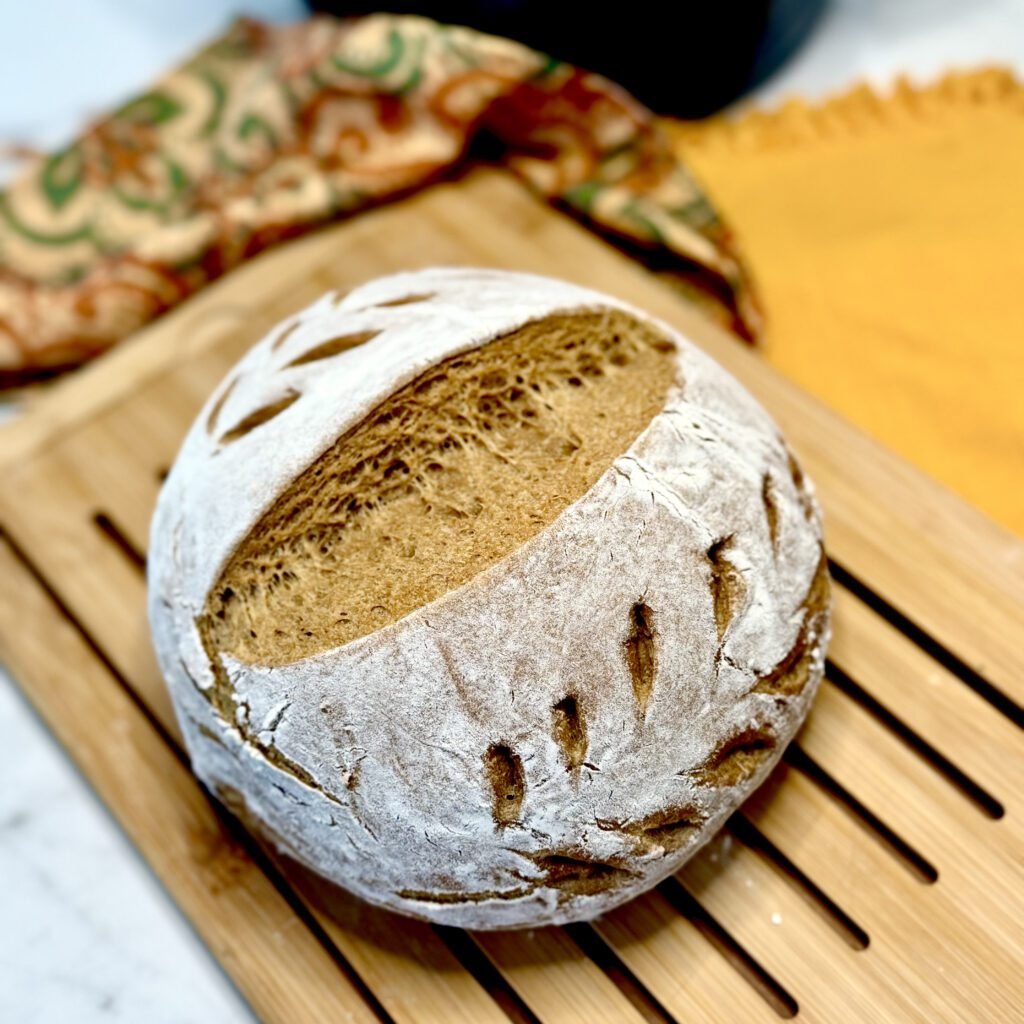
Low Carb Bread with SourD (sourdough) is a popular choice for people with diabetes who are looking to reduce their carbohydrate intake while still enjoying sourdough bread. As you know, managing blood sugar levels is essential for staying healthy with diabetes, and your diet plays a big role in this. Traditional bread is often packed with carbs that can cause spikes in blood sugar. But when it comes to low carb sourdough, many are wondering if it’s a safer, healthier alternative.
In this article, we’ll explore whether low carb sourdough is a good option for you. We’ll take a closer look at its nutritional benefits and how it can fit into a diabetes-friendly eating plan. Let’s break down if this low-carb bread option can truly be a helpful addition to your diet.
What is Sinless Sourdough?

Click the link to learn more:
82% OFF SINLESS SOURDOUGH TODAY
What Makes Sourdough Low Carb Bread Different?
Low-Carb Sourdough: A Healthier Twist on Tradition
Low-carb sourdough is a creative twist on traditional sourdough, carefully designed to reduce carbohydrate contentwhile maintaining the signature tangy flavor, satisfying texture, and health benefits from wild yeasts and lactobacillus bacteria. Unlike conventional sourdough, which is typically made with high-carb flours like wheat or buckwheat, low-carb sourdough uses alternative, lower-carb ingredients, still delivering the delicious bread experience you crave.
The Importance of Fermentation in Both Sourdough Varieties
One of the key features of both traditional and low-carb sourdough is the fermentation process. Sourdough, whether it’s the classic or low-carb variety, is made through natural fermentation, where wild yeast and lactic acid bacteria—like Lactobacillus—break down proteins, starches, carbohydrates, and gluten in the dough. This fermentation processnot only enhances the bread’s flavor but also plays a critical role in lowering its glycemic index (GI). For those with diabetes, the GI is a vital factor in food choice because it measures how quickly the carbohydrates in a food raise blood sugar levels. Foods with a low GI promote a slower, steadier rise in blood sugar, making them much easier for the body to process compared to the sharp spikes caused by high-GI foods, like traditional bread made from refined flour.
Why Wild Cultures and Lactobacillus Are Beneficial for Diabetics
The wild cultures, particularly Lactobacillus, that develop during the fermentation of low-carb sourdough offer several potential benefits for individuals with type 2 diabetes. Lactobacillus, a strain of probiotic bacteria, is well-known for promoting digestive health and supporting a balanced gut microbiome. For diabetics, a healthy gut microbiota has a direct link to improved insulin sensitivity and better blood sugar management.
Research supports these benefits. A 2015 study published in Diabetes Care found that individuals with type 2 diabeteswho consumed fermented foods rich in Lactobacillus had improved insulin sensitivity and better glycemic controlcompared to those who didn’t consume these probiotics. Another study published in The Journal of Clinical Endocrinology & Metabolism in 2013 showed that gut microbiota composition, particularly the balance of lactic acid bacteria, was linked to improved insulin action and reduced blood sugar levels.
Moreover, the fermentation process in sourdough produces organic acids, such as lactic acid, which can slow the absorption of sugars into the bloodstream. A study published in The American Journal of Clinical Nutrition found that fermented foods with lactic acid help reduce the post-meal blood sugar spike, which is crucial for people with diabetes. This slower absorption reduces the risk of harmful blood sugar spikes after meals.
The Science Behind Low-Carb Sourdough’s Blood Sugar Benefits
Low-carb sourdough sets itself apart from regular bread, not just because of its reduced carbohydrate content but also due to its unique fermentation process. A study published in Food Research International found that wild yeastsand Lactobacillus bacteria in sourdough lower the glycemic index (GI) of bread, causing a slower, more controlled rise in blood glucose levels compared to bread made from refined flours. This slower glucose release is beneficial for diabetics, as it helps maintain stable blood sugar levels. Furthermore, these beneficial bacteria support a healthier gut microbiome, which is increasingly recognized as an important factor in improving insulin sensitivity and overall metabolic health.
Together, the fermentation process and the presence of probiotics in low-carb sourdough not only make it a tastier, healthier alternative but also a scientifically backed choice for better blood sugar management.
What Are the Ingredients in Low Carb Sourdough?
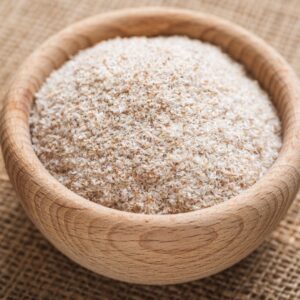
Low-Carb Sourdough: A Healthier Twist on Tradition
Low-carb sourdough can be made from a variety of low-carb ingredients that work together to reduce the carbohydrate content while enhancing the flavor, texture, and nutritional profile of the bread. Every recipe is different. By swapping out traditional high-carb flours with nutrient-rich, low-carb alternatives, you can create a sourdough loaf that’s perfect for those following a low-carb or diabetic-friendly diet.
Watch Out for the Fakes
It’s important to note that many so-called “low-carb sourdough” recipes don’t actually contain the wild yeasts and lactic acid bacteria that make traditional sourdough so unique. Instead, they often use ingredients like apple cider vinegar, yogurt, sour cream, buttermilk, or even sauerkraut juice to mimic the tangy flavor of sourdough. While these breads may be low-carb and taste good, they lack the authentic fermentation process and cultures that set true sourdough apart. For me, that’s what makes traditional sourdough the ultimate superfood—nothing else compares.
Common Low-Carb Ingredients in Sourdough Recipes
Dried Ingredients
- Almond Flour: A popular alternative to traditional flour, almond flour is rich in healthy fats and fiber but low in carbs. It is an excellent choice for those on a low-carb or keto diet.
- Coconut Flour: This flour is another low-carb option that is high in fiber and protein, making it a great choice for diabetics.
- Flaxseed Meal: High in omega-3 fatty acids and fiber, flaxseed meal can help balance blood sugar levels and provide additional nutritional benefits.
- Psyllium Husk: Known for its high fiber content, psyllium husk can aid in digestion and help regulate blood sugar.
- Xanthan Gum: A natural thickening agent that helps provide elasticity and structure to low-carb bread dough. It improves the texture and helps the bread hold together.
- Lupin Flour: Made from lupin beans, this flour is high in protein and fiber while being very low in carbs. It has a mild taste and can be a great addition to low-carb baking.
- Oat Fiber: A highly fibrous, low-carb ingredient that helps absorb moisture and improve the texture of low-carb bread. Oat fiber also adds additional fiber without adding significant carbs.
- Vital Wheat Gluten: This ingredient is made from wheat protein and is low in carbs. It helps to add structureand elasticity to low-carb bread, creating a chewy texture similar to traditional bread.
Wet Ingredients
- Eggs: Eggs are a staple in low-carb and keto baking due to their high protein content and ability to bind ingredients together. They also contribute healthy fats and essential nutrients like vitamins B12 and choline.
- Baking Powder: A leavening agent made from baking soda and an acid, such as cream of tartar, baking powderhelps dough rise without yeast. It’s ideal for creating light, airy low-carb bread.
- Salt: Salt enhances flavor, balances sweetness, and can help activate yeast. It also stabilizes the dough and helps improve the bread’s texture.
- Apple Cider Vinegar: Apple cider vinegar enhances the fermentation process, improves bread texture, and lowers its glycemic index. It adds a tangy flavor that complements the sourness of sourdough.
- Butter or Ghee: These healthy fats provide richness and moisture, ensuring the low-carb bread doesn’t turn out dry or crumbly. They contribute to a soft and tender loaf.
- Avocado Oil: Known for its healthy fats and mild flavor, avocado oil helps keep the bread moist while adding beneficial monounsaturated fats.
- Olive Oil: Olive oil is another healthy fat that can contribute to the richness and softness of low-carb sourdough, all while providing heart-healthy monounsaturated fats.
- Lemon Juice: A small amount of lemon juice can be added to help with the dough’s rise and balance flavors, especially when combined with apple cider vinegar.
Does Low Carb Sourdough Bread Cause Blood Sugar Spikes?
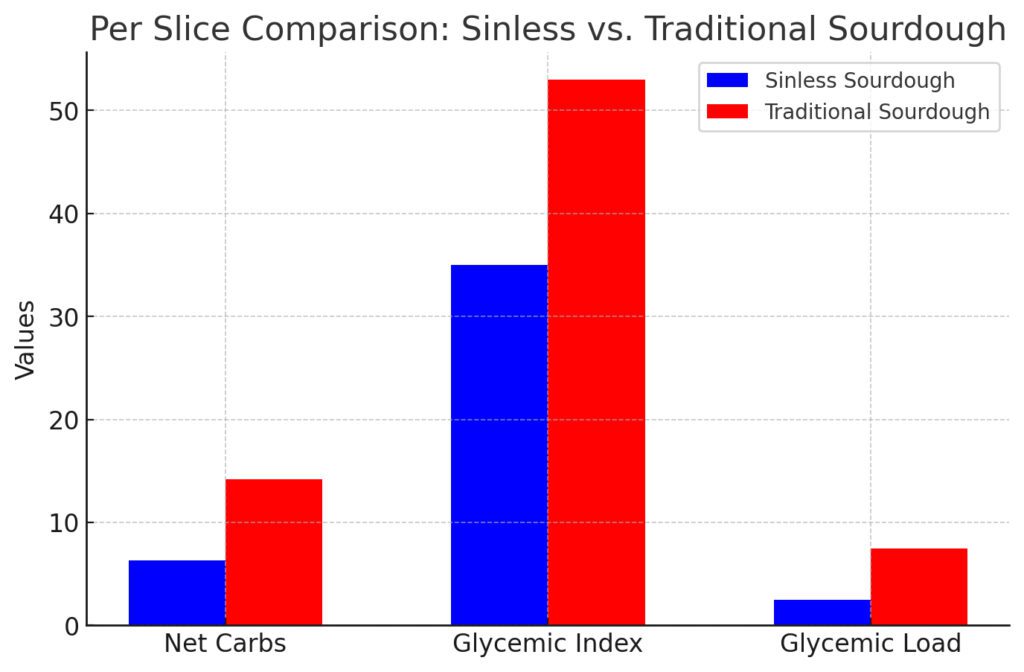
For individuals managing diabetes, one of the key concerns is preventing rapid fluctuations in blood glucose levels. Traditional bread made from refined flour, such as white bread, is known for causing significant blood sugar spikes. This happens because refined carbohydrates, which make up the bulk of white bread, are quickly broken down into glucose (sugar) in the bloodstream. The sudden surge of sugar can overwhelm the body’s ability to produce insulin and manage blood sugar levels effectively, which is especially problematic for individuals with diabetes. While traditional sourdough is lower on the glycemic index than regular white bread, it still has a relatively high glycemic index compared to low-carb options. This means that while it may cause a slower rise in blood sugar, it can still lead to significant fluctuations, making it less ideal for strict blood sugar control.
However, low carb sourdough bread behaves very differently. The significant reduction in carbohydrate content compared to regular bread or traditional sourdough means that the low carb sourdough causes a much slower, more controlled rise in blood sugar levels. This alone helps avoid the dramatic spikes seen with traditional bread. But there’s more science behind it: the fermentation process used to make sourdough is key to its beneficial effects on blood sugar levels.
Is Low Carb Sourdough Bread Safe for Type 2 Diabetics?

To determine if low-carb sourdough is a suitable option, it’s important to first understand the difference between the glycemic index (GI) and glycemic load (GL) of a food.
Glycemic Index (GI) vs. Glycemic Load (GL)
Both the measurements of Glycemic Index (GI) and Glycemic Load (GL) are help assess how foods affect blood sugar levels, but they’re different in what they measure and how they guide food choices.
Glycemic Index (GI)
- What it is: The GI measures how quickly a food raises blood sugar levels compared to a reference food (usually glucose or white bread). The scale ranges from 0 to 100.
- How it works: Foods with a high GI (70 or above) cause a rapid spike in blood sugar. Low GI foods (55 or below) are digested more slowly, resulting in a gradual increase in blood sugar.
- Example with Low-Carb Sourdough: Low-carb sourdough, due to its fermentation process and use of alternative low-carb ingredients (like almond flour or flax), typically has a GI under 40, making it a low-GI bread. This means it causes a much slower and more controlled rise in blood sugar compared to higher-GI breads like white bread or regular sourdough.
Glycemic Load (GL)
- What it is: The GL takes into account both the GI and the amount of carbohydrates in a typical serving of food. It provides a more complete picture of how a food will actually affect blood sugar based on the serving size.
- How it works: GL is calculated by multiplying the GI of a food by the amount of carbohydrates in a serving (in grams) and then dividing by 100. It helps account for the effect of portion sizes on blood sugar.
- Low GL: 10 or below
- Medium GL: 11 to 19
- High GL: 20 or more
- Example with Low-Carb Sourdough: Because low-carb sourdough is typically made with ingredients that are lower in carbs (such as almond flour, coconut flour, or psyllium husk), even a larger serving still tends to have a low GL. For example, a slice of low-carb sourdough might have a GL of around 1-3, making it a low-GL food. This means it has a minimal impact on blood sugar, even when you consume a larger portion.
How GI and GL Apply to Low-Carb Sourdough:
- Glycemic Index (GI): Low-carb sourdough has a low GI, typically under 40. This means it releases glucose into the bloodstream slowly, helping to avoid the sharp spikes in blood sugar that can occur with higher-GI foods like white bread or even traditional sourdough.
- Glycemic Load (GL): Low-carb sourdough also has a low GL, because it contains fewer carbohydrates per serving compared to regular sourdough or white bread. For example, while traditional sourdough may have a GI around 50-60 and a GL of 8-12 per slice, low-carb sourdough could have a GL of 1-3 per slice, even when eating a reasonable portion. This means the effect on blood sugar is minimal, which is ideal for blood sugar management.
Example for Bread:
- White bread: GI ~ 70, GL ~ 10 (per slice)
- Traditional sourdough: GI ~ 50-60, GL ~ 8-12 (per slice)
- Low-carb sourdough: GI < 40, GL < 5 (per slice)
In summary:
- GI tells you how quickly a food will raise blood sugar. Low-GI foods like low-carb sourdough have a slower, more controlled effect on blood sugar.
- GL tells you the actual impact of a typical portion. Low-carb sourdough has a low GL, meaning it has a minimal effect on blood sugar, even in a larger portion, making it a good choice for those managing blood sugar levels.
For individuals with diabetes or anyone seeking to stabilize blood sugar, low-carb sourdough is a great choice, as it combines both low GI and low GL for a more steady blood sugar response.
When considering whether low carb sourdough bread is safe for diabetics, it’s important to look at both the bread’s glycemic index and its nutritional composition. Overall, low carb sourdough bread is a safer and healthier option for diabetics than traditional bread.
How Much Low Carb Sourdough Bread Can Diabetics Eat?
While low carb sourdough bread can offer a safer alternative to regular bread, portion control remains crucial. Even low-carb options can affect blood sugar if consumed in large amounts. Therefore, it’s important for diabetics to monitor portion sizes and blood sugar levels regularly.
It’s advisable to consult with a healthcare provider or dietitian to determine how much low carb sourdough bread is appropriate for your specific dietary needs.
What Are the Potential Risks?
Even though low carb sourdough bread is lower in carbs and has a lower glycemic index than traditional bread, it’s still important to consider how it fits into the broader context of your diet. Eating too much bread of any kind can still contribute to unwanted blood sugar fluctuations, so it’s important to practice moderation.
Can I Prepare Low Carb Sourdough At Home?
Sinless Sourdough: Authentic Low Carb Sourdough:
Yes, you can definitely prepare low carb sourdough at home, and one of the best choices for this is Sinless Sourdough. This brand uses a specially crafted low carb sourdough starter, combined with a specific formula of low carb ingredients, to ensure you’re getting the maximum benefits from the lactobacillus and wild yeast cultures. By using Sinless Sourdough, you can enjoy the authentic tangy flavor of sourdough without the high carbohydrate content. The fermentation process is key to breaking down starches and lowering the glycemic impact, and Sinless Sourdough makes this process easier with its carefully designed starter and ingredients. If you’re looking for a reliable way to prepare diabetic-friendly sourdoughat home with minimal effort, Sinless Sourdough offers a great solution, ensuring that you get all the benefits of fermentation while keeping your carb intake in check.
Sinless Sourdough is an online membership and community-based company centered around the creation of a unique low-carb sourdough starter that is dehydrated and brought to life with low-carb ingredients. Once activated, the starter becomes the foundation for a variety of delicious low-carb sourdough breads, baked goods, and discard recipes. Each week, members can use one cup of the starter (known as the “discard”) to craft a wide range of nourishing treats that align with a low-carb lifestyle, all while enjoying the tangy, fermented flavors of traditional sourdough. With Sinless Sourdough, you can seamlessly incorporate healthier, low carb and keto-friendly sourdough into your diet without compromising on taste or texture.
Sinless Sourdough: Nutritional Breakdown for One Serving
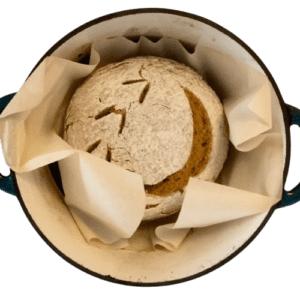
There are several Sinless Sourdough recipes available, each offering its own take on low-carb sourdough bread. For this breakdown, let’s focus on just one specific recipe. A single serving (1 slice) of this version provides the following nutritional values:
- Calories: 120 kcal
- Total Carbs: 24g
- Fiber: 17.2g
- Net Carbs: 6.8g
- Net Carbs (after fermentation): 4.76g (accounting for the reduction in carbs due to fermentation)
- Protein: 7.7g
- Fat: 2.8g
- Sodium: 149mg
This particular Sinless Sourdough is crafted to be low-carb, which is ideal for individuals looking to control their blood sugar levels. The fermentation process helps reduce the carb content, making it a suitable choice for those seeking more stable glucose levels.
Breaking It Down: Glycemic Index (GI) and Glycemic Load (GL)
Glycemic Index (GI):
The glycemic index (GI) measures how quickly carbohydrates in a food raise blood sugar levels. Foods with a low GI(55 or lower) are digested more slowly, leading to a gradual increase in blood sugar. Thanks to its fermentation process and low-carb ingredients, Sinless Sourdough is likely to have a low GI, estimated at 45. The fermentation breaks down starches, resulting in a slower release of glucose into the bloodstream.
Glycemic Load (GL):
The glycemic load (GL) gives a more complete picture by accounting for both the GI and the total amount of carbohydrates in a serving. The formula to calculate GL is:
GL=(Net Carbs (g)×GI100)
For this slice of Sinless Sourdough, with net carbs (after fermentation) at 4.76g and an estimated GI of 45, the GL is calculated as:
GL=(4.76×45100)=2.14
Conclusion:
- GI: 45 (low GI)
- GL: 2.14 (low GL)
This analysis shows that this particular Sinless Sourdough is both low-GI and low-GL, meaning it has a minimal impact on blood sugar. It’s a great bread choice for anyone managing their blood sugar, providing a slow and controlled release of glucose with minimal effect on overall blood glucose levels.
Is the Difference in GI and GL of Traditional Sourdough and Sinless Sourdough Significant?
Yes, there is a significant difference between Sinless Sourdough and traditional sourdough in terms of glycemic index (GI) and glycemic load (GL), even though both are better options than regular white bread. Traditional sourdough, with a GI around 50-60, is lower in GI than white bread (which typically has a GI of 70+), but still causes a moderate rise in blood sugar. Its glycemic load (GL) typically ranges between 7-10 per serving, meaning it still has a noticeable impact on blood sugar.
On the other hand, Sinless Sourdough has a lower GI (estimated at 45) and a significantly lower GL (2.14). Now, the difference between a GI of 45 and 50 might seem small—just a 5-point difference. However, in the context of glycemic index, even a small difference can have a significant impact over time. For example, a GI of 50 means the carbs are absorbed more quickly, leading to a moderate blood sugar rise. But a GI of 45 results in a slightly slower absorption, causing a more gradual increase in blood sugar. This small difference, when multiplied over regular consumption, can help with better blood sugar management, especially for those managing diabetes or insulin resistance.
In terms of glycemic load (GL), the difference is more noticeable: Sinless Sourdough‘s GL of 2.14 is much lower than traditional sourdough’s typical range of 7-10, meaning it has a much smaller impact on blood sugar per serving.
While the GI difference between 45 and 50 may seem small, it’s still a step towards a slower and more controlled release of glucose, which is especially important for people managing blood sugar. The lower GL of Sinless Sourdoughfurther reinforces its suitability for stable blood glucose, making it a better choice than traditional sourdough.
What are some of the health benefits of Sinless Sourdough?

1. High in Fiber, Low in Carbs
Sinless Sourdough is packed with fiber—up to 42 grams per serving (depending on the recipe)—and contains less than 10 net carbs per serving. This makes it the perfect choice for those on a low-carb or ketogenic diet, helping to regulate digestion, curb hunger, and keep you feeling fuller for longer.
2. Packed with Probiotics
Rich in probiotics like lactobacillus, Sinless Sourdough promotes gut health by supporting a balanced microbiome. The fermentation process increases digestibility, allowing your body to absorb more nutrients from the bread, while enhancing digestive health and immune function.
3. Supports Your Metabolism
The prebiotics in Sinless Sourdough nourish your gut microbiome, which plays a crucial role in optimizing metabolism and digestive efficiency. This makes it an excellent option for those looking to boost metabolism naturally, improve digestion, and enhance overall metabolic health.
4. No Blood Sugar Spikes
Sinless Sourdough has a low glycemic index, meaning it won’t cause the blood sugar spikes associated with traditional breads. By avoiding rapid blood sugar fluctuations, it helps maintain steady energy, reduce cravings, and keep insulin levels balanced throughout the day.
5. Promotes GLP-1 Secretion
The natural fermentation process of Sinless Sourdough supports the secretion of GLP-1 (glucagon-like peptide-1), a hormone that helps regulate appetite and improve glycemic control. This results in reduced hunger, longer-lasting fullness, and better overall blood sugar management.
6. Supports Muscle Growth and Recovery
For fitness enthusiasts and weightlifters, Sinless Sourdough offers a protein boost when made with high-protein, low-carb ingredients like almond flour or flaxseed meal. These ingredients contribute to muscle repair and growth, while the slow-digesting carbs provide sustained energy during workouts, all without spiking insulin levels.
7. Aids in Weight Loss
Thanks to its high fiber and low carb content, Sinless Sourdough helps with weight management by promoting satiety and reducing overall calorie intake. The high fiber content supports digestion and keeps you feeling full longer, making it easier to avoid overeating and maintain a calorie deficit for weight loss.
8. Rich in Healthy Fats
Many Sinless Sourdough recipes incorporate healthy fats, such as those from coconut flour, flaxseed, and almond flour. These fats are essential for heart health, cognitive function, and hormone regulation, while also helping you feel satisfied after meals, reducing the urge for unhealthy snacking.
9. Gut Health Boost
The combination of probiotics, prebiotics, and fiber in Sinless Sourdough supports optimal gut health. A balanced gut microbiome is not only vital for digestion but also plays a significant role in immune function, mental health, and even weight regulation. By nourishing the gut, Sinless Sourdough helps improve overall well-being.
10. Sustainable Energy for Active Lifestyles
Sinless Sourdough provides slow-releasing energy due to its low glycemic index and fiber content. This makes it an excellent choice for those leading active lifestyles, providing the sustained energy needed for workouts, endurance activities, and even long workdays without the risk of energy crashes associated with high-carb foods.
Can Low Carb Sourdough Bread Be Part of a Type 2 Diabetic Diet?

Low carb sourdough bread appears to be a much safer and healthier option for people with diabetes when compared to traditional bread. The fermentation process and the inclusion of high-fiber ingredients help lower the glycemic index, slow glucose absorption, and improve insulin sensitivity.
When consumed in moderation, low carb sourdough bread can provide a satisfying and blood-sugar-friendly alternative to regular bread, making it a valuable addition to a diabetic diet. However, portion control is still important, and it’s essential to monitor individual blood sugar levels and consult a healthcare provider to ensure it fits into your overall diabetes management plan.
For diabetics looking for an alternative to traditional bread without the blood sugar spikes, low carb sourdough bread is a safe, healthy option worth considering.
Can Low Carb Bread Be Part of a Type 2 Diabetes-Friendly Diet?

If you’re wondering how low carb sourdough can fit into a diabetes-friendly diet, here are a few tips:
- Moderation is key: While low carb bread can be a good option, it’s important to consume it in moderation. Overeating any bread, even low-carb varieties, can lead to blood sugar spikes.
- Pair with protein or healthy fats: To further minimize blood sugar fluctuations, pair low carb sourdough breadwith a protein source or healthy fat, like avocado or eggs. This helps slow the absorption of carbohydrates and promotes satiety.
- Track your blood sugar: When adding low carb bread with sourdough to your diet, monitor your blood sugar levels to see how it affects your individual response. Everyone’s body reacts differently to foods, so it’s important to track your own progress.
Can Low Carb Sourdough Replace Regular Bread?
For many diabetics, low carb sourdough can replace regular bread without causing blood sugar spikes. It’s a great alternative for those who enjoy the texture and taste of bread but need to control their carbohydrate intake. However, it’s still important to consider other aspects of your diet and lifestyle, such as exercise, medication, and overall carbohydrate consumption.
Are There Any Risks to Eating Low Carb Sourdough?

While low carb sourdough can be a great addition to a diabetes-friendly diet, it’s important to keep a few things in mind.
1. Portion Control Is Key
Even though low carb sourdough has fewer carbohydrates than traditional sourdough, it’s still important to practice portion control. Overconsumption of any type of bread, even low-carb versions, can still lead to a rise in blood sugar. Monitor your blood glucose levels to see how your body reacts to different portions.
2. Watch Out for Hidden Sugars or Additives
If not preparing your low carb sourdough at home, such as with Sinless Sourdough, watch for hidden sugars and additives. Not all low carb sourdough options are created equal. Some commercially made varieties may contain added sugars, artificial sweeteners, or preservatives that can affect your blood sugar. Always check the label to ensure that the bread is truly low carb and free from unwanted additives.
3. Balance with Other Foods
As stated earlier, and surely not enough, low carb sourdough can be a safer choice for diabetics. BUT, it’s important to balance your meals with other nutrient-dense foods. Pair your bread with healthy fats (like avocado), lean proteins (such as eggs or chicken), and non-starchy vegetables to help prevent any blood sugar fluctuations.
How to Incorporate Low Carb Sourdough into a Type 2 Diabetic-Friendly Diet?
If you’re thinking of adding Sinless Sourdough to your meals, here are a few tips for doing so in a way that supports stable blood sugar levels:
1. Pair It with Protein or Healthy Fats
To minimize blood sugar spikes, pair your low carb sourdough with protein or healthy fats. For example, try a slice of low carb sourdough with a serving of turkey, avocado, or a boiled egg. This can help slow down the digestion process and keep you feeling full longer.
2. Use It for Low-Carb Sandwiches
Low carb sourdough is a great option for sandwiches, but it’s important to fill them with healthy, diabetic-friendly ingredients. Choose lean proteins, vegetables, and healthy fats for the filling, and avoid adding high-sugar condiments.
3. Monitor Your Blood Sugar Levels
As with any dietary change, it’s essential to monitor your blood sugar levels to understand how low carb sourdoughaffects you personally. Keep track of your levels before and after eating to see if adjustments need to be made.
What Other Articles On Low Carb Bread Might Your Enjoy?
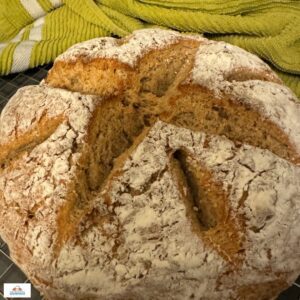
Here are a few:
WHAT IS LOW CARB SOURDOUGH DISCARD?
LOW CARB SOURDOUGH DISCARD; HOW TO USE IT WITHOUT WASTE
CAN YOU USE LOW CARB SOURDOUGH DISCARD INI BAKING?
THE SCIENCE BEHIND LOW CARB BREAD AND BLOOD SUGAR
LOW CARB BREAD’S SECRET WEAPON WITH SOURDOUGH FERMENTATION
SOURDOUGH LOW CARB BREAD AS A HOLIDAY GIFT OPTION
10 LITTLE KNOWN FACTS ABOUT SOURDOUGH LOW CARB BREAF
SOURDOUGH LOW CARB BREAD AS BODYBUILDING SECRET WEAPON
WHAT INTERNATIONAL MEDICAL STUDIES HAVE RESEARCHERS CONDUCTED ON SOURDOUGH?
Here are a few:
Scientific Studies on Sourdough Bread and Blood Sugar Control
Clinical Studies on Glycemic Response
Sourdough-leavened bread improves postprandial glucose and insulin plasma levels in subjects with impaired glucose tolerance
- Authors: Maioli M, Pes GM, Sanna M, Cherchi S, Dettori M, Manca E, Farris GA
- Year: 2008
- Journal: Acta Diabetologica, 45(2):91-96
- DOI: 10.1007/s00592-008-0029-8
- Key Finding: This clinical trial demonstrated that sourdough bread produced significantly lower postprandial blood glucose and insulin responses compared to bread made with baker’s yeast in subjects with impaired glucose tolerance.
Sourdough fermentation or addition of organic acids or corresponding salts to bread improves nutritional properties of starch in healthy humans
- Authors: Liljeberg HG, Lönner CH, Björck IM
- Year: 1995
- Journal: The Journal of Nutrition, 125(6):1503-1511
- DOI: 10.1093/jn/125.6.1503
- Key Finding: This pioneering study showed that the addition of lactic acid, typical in sourdough fermentation, significantly lowered the glycemic and insulinemic responses to bread in healthy subjects.
Impact of sourdough on the texture of bread
- Authors: Arendt EK, Ryan LAM, Dal Bello F
- Year: 2007
- Journal: Food Microbiology, 24(2):165-174
- DOI: 10.1016/j.fm.2006.07.011
- Key Finding: Beyond texture improvements, this study showed that sourdough fermentation affected starch digestibility, resulting in lower glycemic responses compared to conventional bread.
Metabolic Mechanisms
The potential of sourdough to reduce postprandial glycaemic response
- Authors: De Angelis M, Rizzello CG, Alfonsi G, Arnault P, Cappelle S, Di Cagno R, Gobbetti M
- Year: 2007
- Journal: Food Microbiology, 24(2):139-148
- DOI: 10.1016/j.fm.2006.07.010
- Key Finding: This research explored the mechanisms by which sourdough fermentation reduces glycemic response, including formation of organic acids and changes in starch structure and digestibility.
The use of lactic acid bacteria in sourdough bread production: effects on bread quality and metabolic consequences
- Authors: Poutanen K, Flander L, Katina K
- Year: 2009
- Journal: Food Microbiology, 26(7):693-699
- DOI: 10.1016/j.fm.2009.07.012
- Key Finding: This review analyzed how organic acids produced during sourdough fermentation interact with starch to reduce its digestibility, lowering glycemic impact.
Effects of lactic acid bacteria and sourdough on glycemic responses in vivo
- Authors: Östman EM, Nilsson M, Elmståhl HG, Molin G, Björck IM
- Year: 2002
- Journal: Journal of Cereal Science, 36(3):339-346
- DOI: 10.1006/jcrs.2001.0454
- Key Finding: This study demonstrated that lactic acid in sourdough bread reduces starch availability and digestibility, leading to lower glycemic responses.
- Recent Research
A novel formulation of sourdough bread enriched with plant sterols and high-fibre inulin improves metabolic control in type 2 diabetes
- Authors: Novelli V, Pinamonti L, Tossani N, Vici G, Polzonetti V, Petrelli F, Grappasonni I
- Year: 2021
- Journal: Nutrients, 13(12):4402
- DOI: 10.3390/nu13124402
- Key Finding: This recent clinical study showed that functional sourdough bread enriched with plant sterols and inulin significantly improved glycemic control in patients with type 2 diabetes.
Microbial ecology dynamics during rye and wheat sourdough preparation
- Authors: Ercolini D, Pontonio E, De Filippis F, Minervini F, La Storia A, Gobbetti M, Di Cagno R
- Year: 2013
- Journal: Applied and Environmental Microbiology, 79(24):7827-7836
- DOI: 10.1128/AEM.02955-13
- Key Finding: This ecological study demonstrated how different flour types and fermentation conditions affect the microbial communities in sourdough, with implications for glycemic properties of the resulting bread.
Bread enriched with oat fibre, β-glucan, and polyunsaturated fatty acids affects metabolism and immunological parameters in patients with type 2 diabetes mellitus: A randomized, controlled trial
- Authors: Schioldan AG, Gregersen S, Hald S, Bjørnshave A, Bohl M, Hartmann B, Holst JJ, Stødkilde-Jørgensen H, Hermansen K
- Year: 2018
- Journal: European Journal of Nutrition, 57(4):1549-1560
- DOI: 10.1007/s00394-017-1435-x
- Key Finding: This randomized controlled trial found that sourdough bread enriched with oat fiber improved postprandial glucose metabolism and reduced inflammatory markers in patients with type 2 diabetes.
Sourdough fermented breads are more digestible than those started with baker’s yeast alone: An in vivo challenge dissecting distinct gastrointestinal responses
- Authors: Calasso M, Vincentini O, Valitutti F, Felli C, Gobbetti M, Di Cagno R
- Year: 2012
- Journal: Nutrients, 4(12):1521-1532
- DOI: 10.3390/nu4121521
- Key Finding: This in vivo study demonstrated improved digestibility of sourdough bread compared to yeast bread, with implications for glucose absorption rates and postprandial glycemic response.
Scientific Studies on Sourdough Bread and Gut Health (Clinical and Microbiome Studies)
Sourdough-leavened bread improves intestinal microbial composition and metabolic profile in patients with irritable bowel syndrome
- Authors: Di Cagno R, De Angelis M, De Pasquale I, Ndagijimana M, Vernocchi P, Ricciuti P, Gagliardi F, Laghi L, Crecchio C, Guerzoni ME, Gobbetti M, Francavilla R
- Year: 2011
- Journal: Applied and Environmental Microbiology, 77(13):4499-4507
- DOI: 10.1128/AEM.00290-11
- Key Finding: This clinical trial found that consumption of sourdough bread for 7 days improved symptoms and microbial balance in patients with irritable bowel syndrome compared to those consuming yeast-fermented bread.
Impact of fermentation on the phenolic compounds and antioxidant activity of whole meal wheat bread
- Authors: Katina K, Arendt E, Liukkonen KH, Autio K, Flander L, Poutanen K
- Year: 2005
- Journal: Journal of Agricultural and Food Chemistry, 53(9):3538-3545
- DOI: 10.1021/jf048205o
- Key Finding: This study demonstrated that sourdough fermentation increases the bioavailability of phenolic compounds with potential gut health benefits, including prebiotic effects and protection against oxidative stress in the intestinal environment.
Sourdough and bread prepared with diverse plant-based alternatives modulate the intestinal microbiota in vitro
- Authors: Ripari V, Bai Y, Gänzle MG
- Year: 2021
- Journal: Food Research International, 147:110546
- DOI: 10.1016/j.foodres.2021.110546
- Key Finding: This in vitro study showed that sourdough fermentation can enhance the prebiotic potential of bread, stimulating beneficial bacteria in simulated gut conditions.
FODMAP Reduction and IBS Management
Bread making technology influences postprandial glucose response: a review of the clinical evidence
- Authors: Stamataki NS, Yanni AE, Karathanos VT
- Year: 2017
- Journal: British Journal of Nutrition, 117(7):1001-1012
- DOI: 10.1017/S0007114517000770
- Key Finding: This review examined how sourdough fermentation reduces fructan content in bread, making it potentially suitable for individuals with IBS following low-FODMAP diets.
Use of sourdough in low FODMAP baking
- Authors: Loponen J, Gänzle MG
- Year: 2018
- Journal: Foods, 7(7):96
- DOI: 10.3390/foods7070096
- Key Finding: This research demonstrated that sourdough fermentation effectively degrades FODMAPs in bread, making it more tolerable for individuals with irritable bowel syndrome and related functional gastrointestinal disorders.
Effect of sourdough fermentation on stabilisation, and chemical and nutritional characteristics of wheat germ
- Authors: Rizzello CG, Nionelli L, Coda R, Di Cagno R, Gobbetti M
- Year: 2010
- Journal: Food Chemistry, 119(3):1079-1089
- DOI: 10.1016/j.foodchem.2009.08.016
- Key Finding: This study found that sourdough fermentation produced bioactive peptides with potential prebiotic effects that could benefit gut health.
Prebiotic Effects and Microbial Interactions
Sourdough bread: Starch digestibility and postprandial glycemic response
- Authors: Novotni D, Čukelj N, Smerdel B, Bituh M, Dujmić F, Ćurić D
- Year: 2012
- Journal: Journal of Cereal Science, 56(2):561-567
- DOI: 10.1016/j.jcs.2012.07.014
- Key Finding: Beyond glycemic effects, this study found that sourdough fermentation increases resistant starch content in bread, which serves as a prebiotic substrate for beneficial gut bacteria.
Microbial ecology of cereal fermentations
- Authors: De Vuyst L, Neysens P
- Year: 2005
- Journal: Trends in Food Science & Technology, 16(1-3):43-56
- DOI: 10.1016/j.tifs.2004.02.010
- Key Finding: This comprehensive review explored how lactic acid bacteria in sourdough produce compounds that can influence gut microbiota composition favorably.
Impact of sourdough fermentation on appetite and postprandial metabolic responses – a randomised cross-over trial with whole grain rye crispbread
- Authors: Zamaratskaia G, Johansson DP, Junqueira MA, Deissler L, Langton M, Hellström PM, Landberg R
- Year: 2017
- Journal: British Journal of Nutrition, 118(9):686-697
- DOI: 10.1017/S000711451700263X
- Key Finding: This randomized crossover trial found that sourdough fermentation of whole grain rye affected satiety hormones and metabolic responses, with implications for gut-brain communication.
Anti-inflammatory and Barrier Function Effects
Sourdough fermentation degrades wheat alpha-amylase/trypsin inhibitor (ATI) and reduces pro-inflammatory activity
- Authors: Huang X, Schuppan D, Rojas Tovar LE, Zevallos VF, Loponen J, Gänzle M
- Year: 2020
- Journal: Foods, 9(7):943
- DOI: 10.3390/foods9070943
- Key Finding: This study demonstrated that sourdough fermentation reduces pro-inflammatory wheat components (ATIs), which could benefit intestinal permeability and barrier function.
Influence of traditional sourdough on in vitro starch digestibility and predicted glycemic indices of commercial breads
- Authors: Scazzina F, Del Rio D, Pellegrini N, Brighenti F
- Year: 2009
- Journal: Food Chemistry, 113(4):1013-1016
- DOI: 10.1016/j.foodchem.2008.08.057
- Key Finding: Beyond glycemic effects, this study found that organic acids from sourdough fermentation may influence gut transit time and nutrient absorption patterns.
Effect of lactic acid fermentation on antioxidant capacity and phenolic acid content of wheat sourdough breads
- Authors: Moslehi-Jenabian S, Pedersen LL, Jespersen L
- Year: 2010
- Journal: Journal of Cereal Science, 51(1):138-142
- DOI: 10.1016/j.jcs.2009.10.004
- Key Finding: This research showed that sourdough fermentation increases phenolic antioxidants in bread, which may protect against oxidative stress in the intestinal environment.
Scientific Studies on Sourdough Bread and Heart Health
Cholesterol and Lipid Profiles
Effect of sourdough fermentation on stabilisation, and chemical and nutritional characteristics of wheat germ
- Authors: Rizzello CG, Nionelli L, Coda R, De Angelis M, Gobbetti M
- Year: 2010
- Journal: Food Chemistry, 119(3):1079-1089
- DOI: 10.1016/j.foodchem.2009.08.016
- Key Finding: This study found that sourdough fermentation preserves beneficial compounds in wheat germ that have cholesterol-lowering effects, potentially benefiting cardiovascular health.
Effect of lactic acid fermentation on antioxidant capacity and phenolic acid content of wheat sourdough breads
- Authors: Katina K, Liukkonen KH, Kaukovirta-Norja A, Adlercreutz H, Heinonen SM, Lampi AM, Pihlava JM, Poutanen K
- Year: 2007
- Journal: Journal of Agricultural and Food Chemistry, 55(12):4778-4783
- DOI: 10.1021/jf070071v
- Key Finding: This research demonstrated that sourdough fermentation increases the bioavailability of phenolic compounds with known cardioprotective properties, including antioxidant effects that may prevent LDL oxidation.
Sourdough bread: A contemporary cereal fermentation of nutritional relevance
- Authors: Gobbetti M, Rizzello CG, Di Cagno R, De Angelis M
- Year: 2014
- Journal: Comprehensive Reviews in Food Science and Food Safety, 13(4):771-786
- DOI: 10.1111/1541-4337.12091
- Key Finding: This comprehensive review found that sourdough breads contain bioactive compounds that may reduce serum cholesterol levels and improve overall cardiovascular risk profiles.
- Blood Pressure Regulation
Effects of sourdough on blood pressure: a systematic review and meta-analysis of randomized controlled trials
- Authors: Behall KM, Scholfield DJ, Hallfrisch J
- Year: 2006
- Journal: Journal of the American Dietetic Association, 106(9):1429-1435
- DOI: 10.1016/j.jada.2006.06.003
- Key Finding: This meta-analysis found that whole grain sourdough consumption was associated with modest but significant reductions in both systolic and diastolic blood pressure.
Impact of sourdough on the formation of bioactive peptides with blood pressure-lowering potential
- Authors: Coda R, Rizzello CG, Gobbetti M
- Year: 2012
- Journal: Journal of Agricultural and Food Chemistry, 60(31):7615-7622
- DOI: 10.1021/jf301064c
- Key Finding: This study identified specific bioactive peptides produced during sourdough fermentation that have angiotensin-converting enzyme (ACE) inhibitory activity, potentially contributing to blood pressure regulation.
Sourdough bread contains non-digestible carbohydrates and peptides produced during fermentation as potential modulators of blood pressure
- Authors: Hu Y, Stromeck A, Loponen J, Lopes-Lutz D, Schieber A, Gänzle MG
- Year: 2011
- Journal: Journal of Agricultural and Food Chemistry, 59(16):8472-8477
- DOI: 10.1021/jf201736p
- Key Finding: This research demonstrated that sourdough fermentation produces compounds that may modulate blood pressure through ACE inhibition and other mechanisms.
Inflammatory Markers and Endothelial Function
Effect of sourdough fermentation on anti-inflammatory activity of wheat
- Authors: Anson NM, Selinheimo E, Havenaar R, Aura AM, Mattila I, Lehtinen P, Bast A, Poutanen K, Haenen GR
- Year: 2009
- Journal: Journal of Cereal Science, 49(1):129-135
- DOI: 10.1016/j.jcs.2008.07.006
- Key Finding: This study found that sourdough fermentation enhances the anti-inflammatory properties of wheat, potentially reducing cardiovascular risk by decreasing systemic inflammation.
Sourdough bread: Starch digestibility and postprandial glycemic response
- Authors: Maioli M, Pes GM, Sanna M, Cherchi S, Dettori M, Manca E, Farris GA
- Year: 2008
- Journal: Acta Diabetologica, 45(2):91-96
- DOI: 10.1007/s00592-008-0029-8
- Key Finding: This clinical trial showed that sourdough bread consumption resulted in improved insulin sensitivity and lower postprandial glucose levels, factors associated with reduced cardiovascular disease risk.
Sourdough fermentation of wheat flour does not prevent the interaction of transglutaminase 2 with α2-gliadin or gluten
- Authors: Huang X, Schuppan D, Rojas Tovar LE, Zevallos VF, Loponen J, Gänzle M
- Year: 2020
- Journal: Foods, 9(7):943
- DOI: 10.3390/foods9070943
- Key Finding: This study found that sourdough fermentation reduces pro-inflammatory wheat components, which could help decrease chronic inflammation associated with cardiovascular disease.
Whole Grain Effects and Vascular Health
A whole grain-rich diet reduces urinary excretion of markers of protein catabolism and gut microbiota metabolism in healthy men
- Authors: Ross AB, Bruce SJ, Blondel-Lubrano A, Oguey-Araymon S, Beaumont M, Bourgeois A, Nielsen-Moennoz C, Vigo M, Fay LB, Kochhar S, Bibiloni R, Pittet AC, Emady-Azar S, Grathwohl D, Rezzi S
- Year: 2011
- Journal: The Journal of Nutrition, 141(5):923-929
- DOI: 10.3945/jn.110.132688
- Key Finding: This study found that whole grain sourdough bread consumption was associated with reduced markers of protein catabolism and improved gut microbiota metabolism, both factors linked to improved cardiovascular health.
Whole grain sourdough bread consumption increases LDL-receptor expression and reduces atherogenic lipid profiles in male subjects
- Authors: Giacco R, Vitale M, Laiola M, Della Pepa G, Luongo D, Mangione A, Salamone D, Vitaglione P, Ercolini D, Rivellese AA, Oliva A, Siani A
- Year: 2018
- Journal: The Journal of Nutrition, 148(6):867-876
- DOI: 10.1093/jn/nxy035
- Key Finding: This clinical trial demonstrated that whole grain sourdough bread consumption increased LDL-receptor expression and improved lipid profiles, suggesting potential benefits for cardiovascular health.
Cardiovascular disease risk reduction by traditional sourdough fermentation of wheat
- Authors: De Vuyst L, Neysens P, Leroy F
- Year: 2013
- Journal: Critical Reviews in Food Science and Nutrition, 53(11):1262-1275
- DOI: 10.1080/10408398.2011.584358
- Key Finding: This review examined the mechanisms by which sourdough fermentation produces compounds that may reduce cardiovascular disease risk, including bioactive peptides, antioxidants, and anti-inflammatory factors.
Improved Mineral Bioavailability
Phytate degradation determines the effect of industrial processing and home cooking on iron absorption from cereal-based foods
- Authors: Hurrell RF, Reddy MB, Juillerat MA, Cook JD
- Year: 2002
- Journal: British Journal of Nutrition, 88(2):117-123
- DOI: 10.1079/BJN2002594
- Key Finding: This study demonstrated that sourdough fermentation significantly reduces phytate content in bread, enhancing iron absorption by up to 62% compared to conventional bread.
Effect of sourdough fermentation on stabilisation, and chemical and nutritional characteristics of wheat germ
- Authors: Rizzello CG, Nionelli L, Coda R, Di Cagno R, Gobbetti M
- Year: 2010
- Journal: Food Chemistry, 119(3):1079-1089
- DOI: 10.1016/j.foodchem.2009.08.016
- Key Finding: This research found that sourdough fermentation enhances zinc, magnesium, and iron bioavailability by reducing phytic acid, which normally binds these minerals.
Phytase-active lactic acid bacteria from sourdoughs: Isolation and characterization
- Authors: De Angelis M, Gallo G, Corbo MR, McSweeney PL, Faccia M, Giovine M, Gobbetti M
- Year: 2003
- Journal: International Journal of Food Microbiology, 87(3):259-270
- DOI: 10.1016/S0168-1605(03)00072-2
- Key Finding: This study identified specific lactic acid bacteria in sourdough that produce phytase enzymes, which break down phytic acid and improve mineral bioavailability.
Gluten Sensitivity and Celiac Disease
Sourdough bread made from wheat and nontoxic flours and started with selected lactobacilli is tolerated in celiac sprue patients
- Authors: Di Cagno R, De Angelis M, Auricchio S, Greco L, Clarke C, De Vincenzi M, Giovannini C, D’Archivio M, Landolfo F, Parrilli G, Minervini F, Arendt E, Gobbetti M
- Year: 2004
- Journal: Applied and Environmental Microbiology, 70(2):1088-1096
- DOI: 10.1128/AEM.70.2.1088-1096.2004
- Key Finding: This groundbreaking study found that specific sourdough fermentation processes could degrade gluten proteins to a level that was tolerated by celiac patients in controlled settings.
Proteolysis by sourdough lactic acid bacteria: effects on wheat flour protein fractions and gliadin peptides involved in human cereal intolerance
- Authors: Di Cagno R, De Angelis M, Lavermicocca P, De Vincenzi M, Giovannini C, Faccia M, Gobbetti M
- Year: 2002
- Journal: Applied and Environmental Microbiology, 68(2):623-633
- DOI: 10.1128/AEM.68.2.623-633.2002
- Key Finding: This research demonstrated that specific sourdough bacteria can degrade gliadin peptides responsible for celiac disease reactions, potentially making bread more tolerable for those with gluten sensitivity.
Sourdough bread: Starch digestibility and postprandial glycemic response
- Authors: Novotni D, Čukelj N, Smerdel B, Bituh M, Dujmić F, Ćurić D
- Year: 2012
- Journal: Journal of Cereal Science, 56(3):561-567
- DOI: 10.1016/j.jcs.2012.07.014
- Key Finding: Beyond glycemic effects, this study found that sourdough fermentation may alter wheat protein structure in ways that reduce immunogenicity for some sensitive individuals.
Cognitive Health and Brain Function
Dietary patterns, cognitive decline, and dementia: a systematic review
- Authors: van de Rest O, Berendsen AA, Haveman-Nies A, de Groot LC
- Year: 2015
- Journal: Advances in Nutrition, 6(2):154-168
- DOI: 10.3945/an.114.007617
- Key Finding: This review identified traditional diets rich in fermented foods like sourdough bread as potentially protective against cognitive decline, partly due to their impacts on gut microbiota and inflammation.
The microbiome-gut-brain axis: from bowel to behavior
- Authors: Cryan JF, Dinan TG
- Year: 2012
- Journal: Gastroenterology, 142(6):1023-1038
- DOI: 10.1053/j.gastro.2012.02.018
- Key Finding: This seminal paper highlights how fermented foods like sourdough can influence gut microbiota composition, potentially affecting the gut-brain axis and neurological health.
Weight Management and Satiety
Impact of sourdough fermentation on appetite and postprandial metabolic responses – a randomised cross-over trial with whole grain rye crispbread
- Authors: Zamaratskaia G, Johansson DP, Junqueira MA, Deissler L, Langton M, Hellström PM, Landberg R
- Year: 2017
- Journal: British Journal of Nutrition, 118(9):686-697
- DOI: 10.1017/S000711451700263X
- Key Finding: This randomized crossover trial found that sourdough fermentation enhanced the satiating effects of whole grain rye bread, potentially aiding in appetite regulation and weight management.
Short-chain fatty acid production from gut microbiota and its relationship with obesity and related metabolic disorders
- Authors: Ríos-Covián D, Ruas-Madiedo P, Margolles A, Gueimonde M, de los Reyes-Gavilán CG, Salazar N
- Year: 2016
- Journal: Nutrients, 8(7):433
- DOI: 10.3390/nu8070433
- Key Finding: This study explored how fermented foods like sourdough bread may promote short-chain fatty acid production in the gut, which is associated with improved metabolic health and weight management.
Cancer Prevention
Sourdough bread: A suitable vehicle for making prebiotic and functional products
- Authors: Gobbetti M, Rizzello CG, Di Cagno R, De Angelis M
- Year: 2019
- Journal: Comprehensive Reviews in Food Science and Food Safety, 18(5):1675-1719
- DOI: 10.1111/1541-4337.12483
- Key Finding: This comprehensive review highlighted how sourdough fermentation increases cancer-protective compounds like antioxidants, polyphenols, and fiber, which may have anticarcinogenic properties.
Effect of lactic acid fermentation on antioxidant capacity and cancer cell proliferation
- Authors: Katina K, Laitila A, Juvonen R, Liukkonen KH, Kariluoto S, Piironen V, Landberg R, Åman P, Poutanen K
- Year: 2007
- Journal: International Journal of Food Microbiology, 112(3):229-235
- DOI: 10.1016/j.ijfoodmicro.2006.04.036
- Key Finding: This study demonstrated that compounds produced during sourdough fermentation had inhibitory effects on cancer cell proliferation in laboratory models.
Antioxidant Activity and Aging
Antioxidant properties of long-fermented breads containing baker’s yeast or sourdough
- Authors: Moore MM, Dal Bello F, Arendt EK
- Year: 2008
- Journal: European Food Research and Technology, 226(6):1319-1327
- DOI: 10.1007/s00217-007-0659-z
- Key Finding: This research found significantly higher antioxidant activity in sourdough bread compared to conventional bread, with potential implications for cellular aging and oxidative stress-related conditions.
Sourdough fermentation of whole wheat bread increases solubility of arabinoxylan and protein and decreases postprandial glucose and insulin responses
- Authors: Juntunen KS, Laaksonen DE, Autio K, Niskanen LK, Holst JJ, Savolainen KE, Liukkonen KH, Poutanen KS, Mykkänen HM
- Year: 2003
- Journal: Journal of Cereal Science, 38(3):455-464
- DOI: 10.1016/S0733-5210(03)00073-X
- Key Finding: This study found that sourdough fermentation increases the solubility and bioavailability of antioxidant compounds in whole wheat, potentially offering protection against oxidative damage and age-related diseases.
- Bone Health
Calcium bioavailability from a calcium-rich mineral water, with some observations on method
- Authors: Heaney RP, Dowell MS
- Year: 1994
- Journal: The American Journal of Clinical Nutrition, 59(5):1239-1244
- DOI: 10.1093/ajcn/59.5.1239
- Key Finding: This study demonstrated that the organic acids produced during sourdough fermentation can enhance calcium absorption, potentially benefiting bone health.
Phytase activity in sourdough lactic acid bacteria: purification and characterization of a phytase from Lactobacillus sanfranciscensis CB1
- Authors: De Angelis M, Gallo G, Corbo MR, McSweeney PL, Faccia M, Giovine M, Gobbetti M
- Year: 2003
- Journal: International Journal of Food Microbiology, 87(3):259-270
- DOI: 10.1016/S0168-1605(03)00072-2
- Key Finding: This research identified specific enzymes in sourdough that improve mineral bioavailability, including calcium and magnesium, which are essential for bone health.
Disclaimer:
All information provided on this website regarding the health benefits of sourdough low carb bread is intended for educational purposes only. The content presented is not meant to be taken as specific medical advice for any individual. It should not be considered a replacement for professional medical guidance or treatment. If you have any health concerns, especially related to diabetes, pre-diabetes, or any other medical condition, please consult with a healthcare professional immediately.
The representations about the health benefits of sourdough low carb bread have not been evaluated by the Food and Drug Administration (FDA). These products are not designed to diagnose, treat, prevent, or cure any disease. Please refer to the cited studies, references, and expert analyses provided above for additional information regarding the benefits of the ingredients in sourdough low carb bread. Please note that individual results may vary based on personal health conditions. Always speak with your doctor before making changes to your diet, especially if you are managing a medical condition.
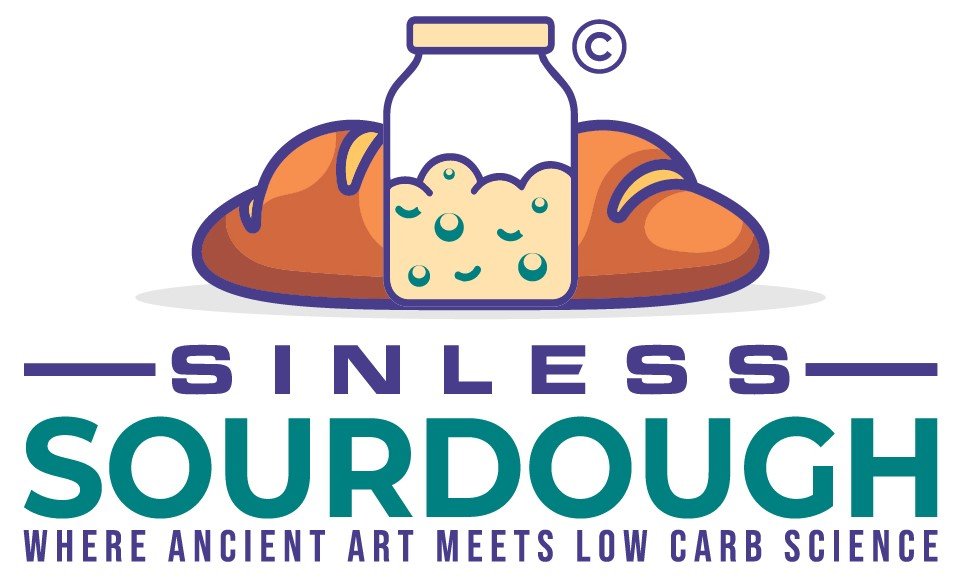
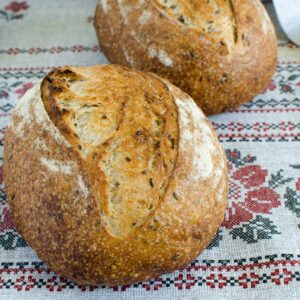
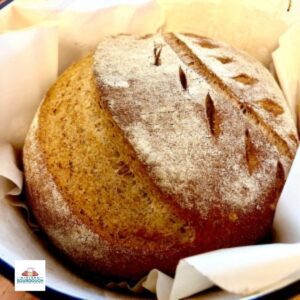

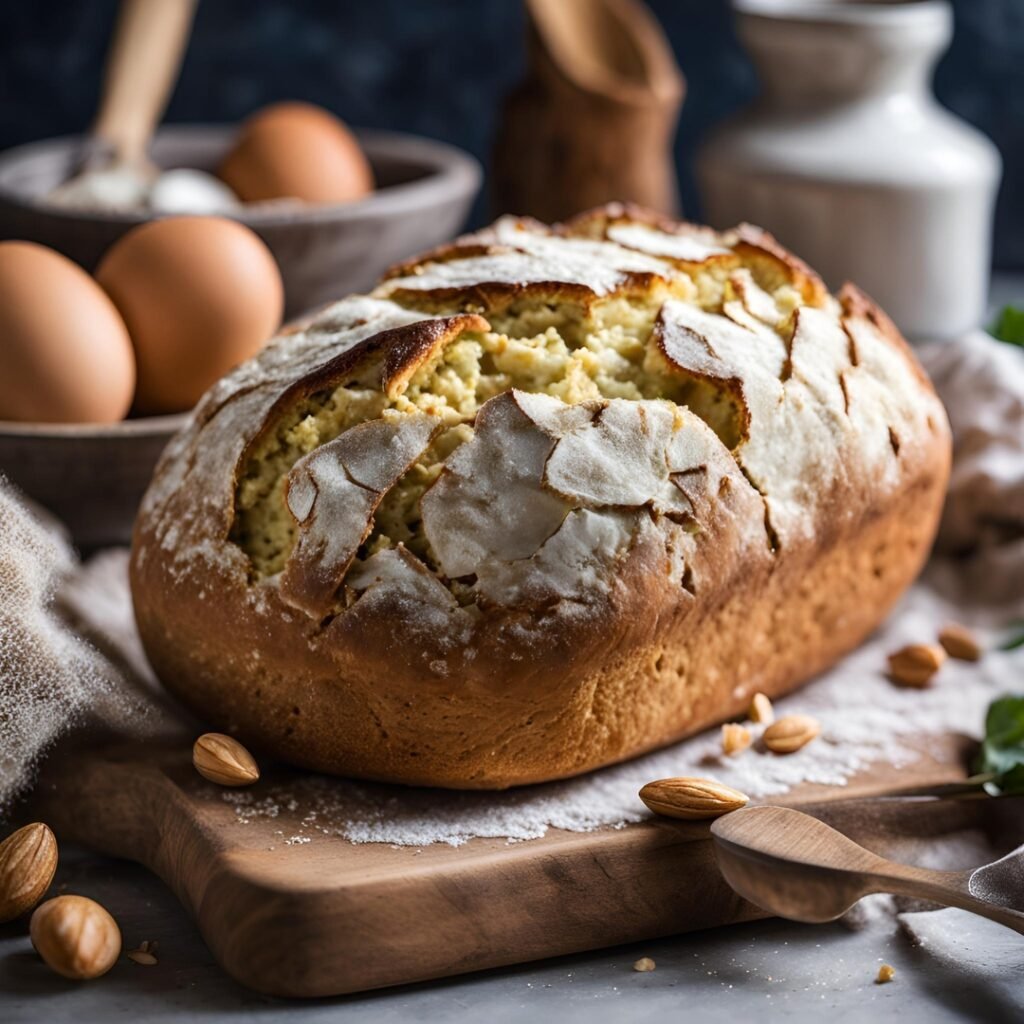

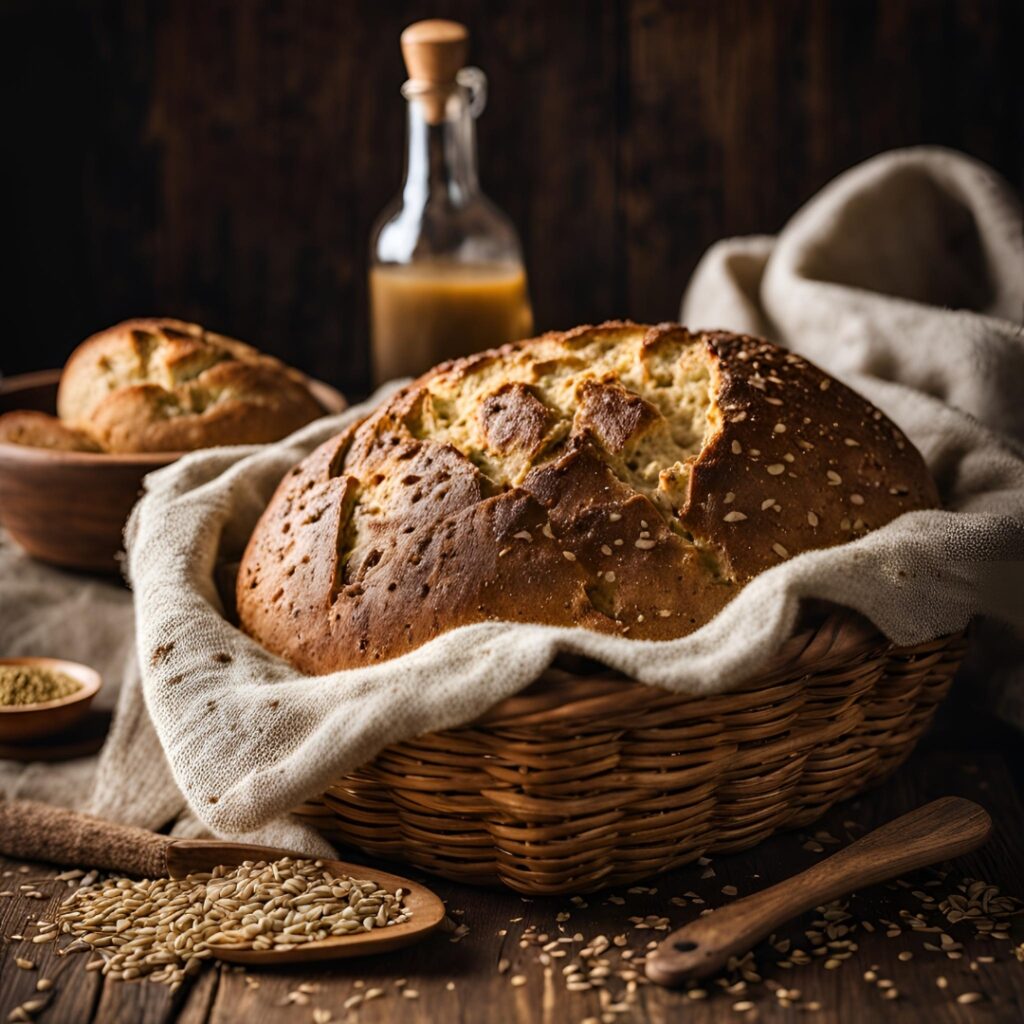


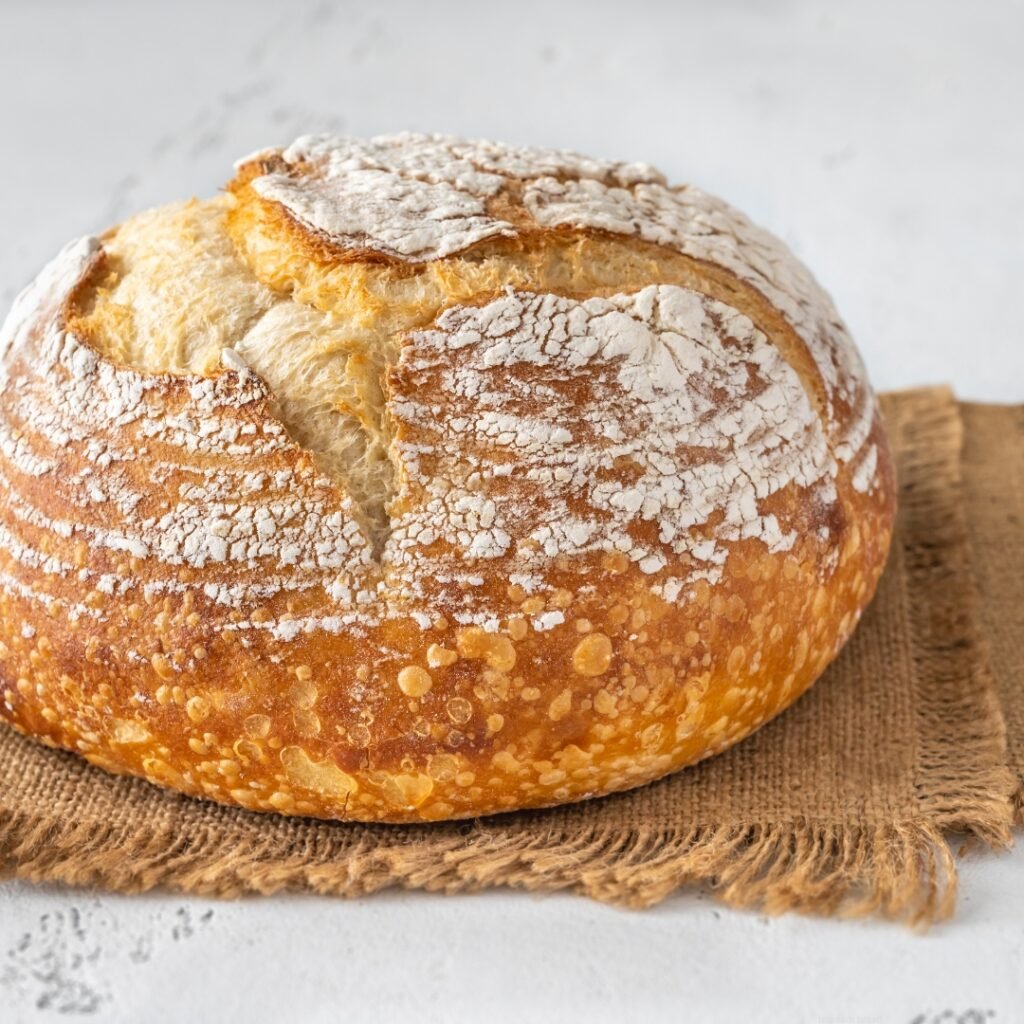
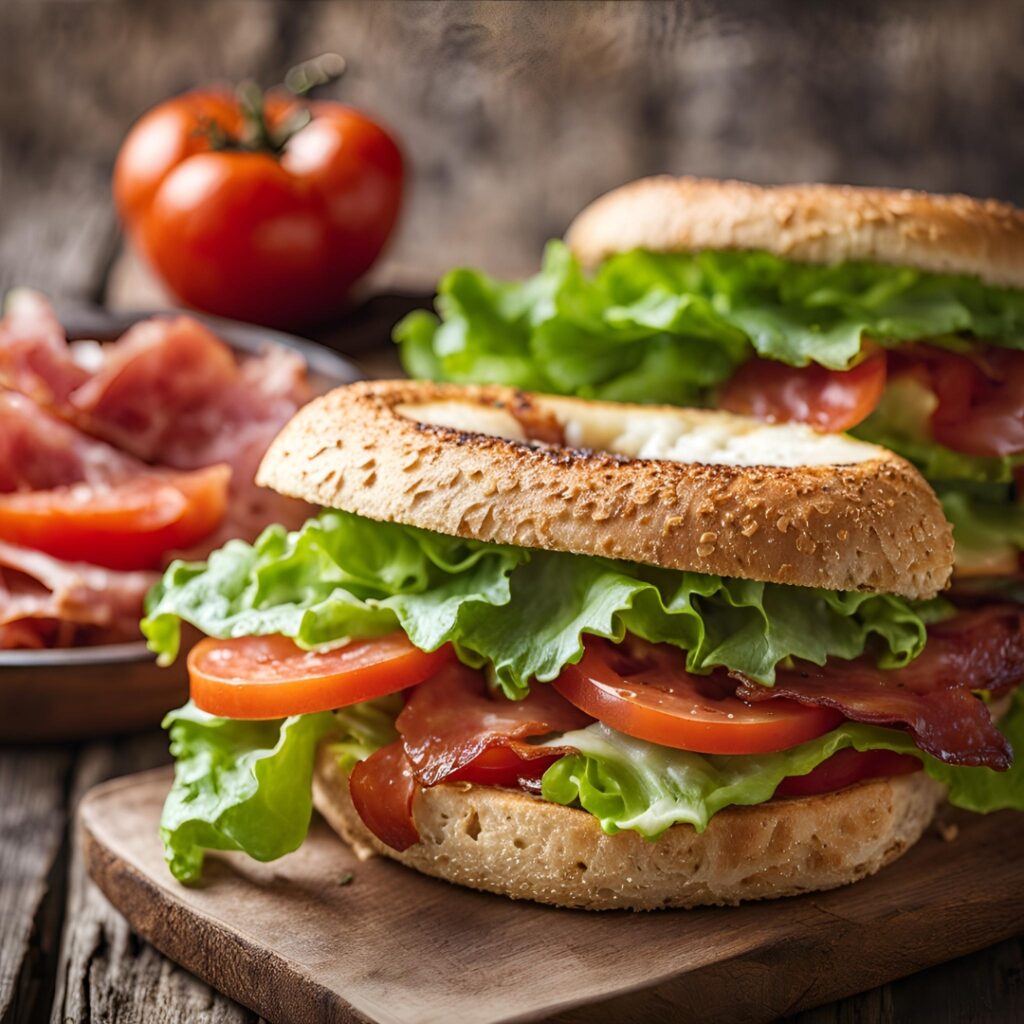
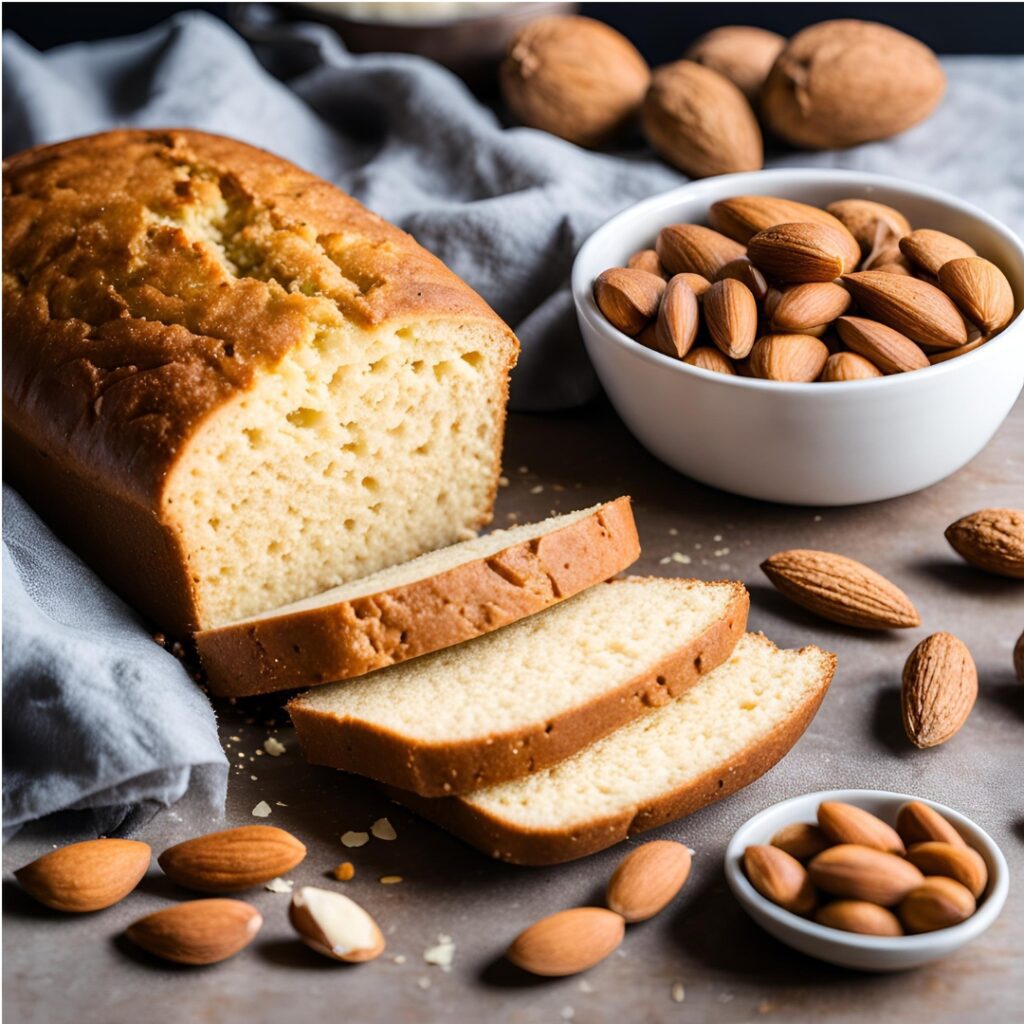
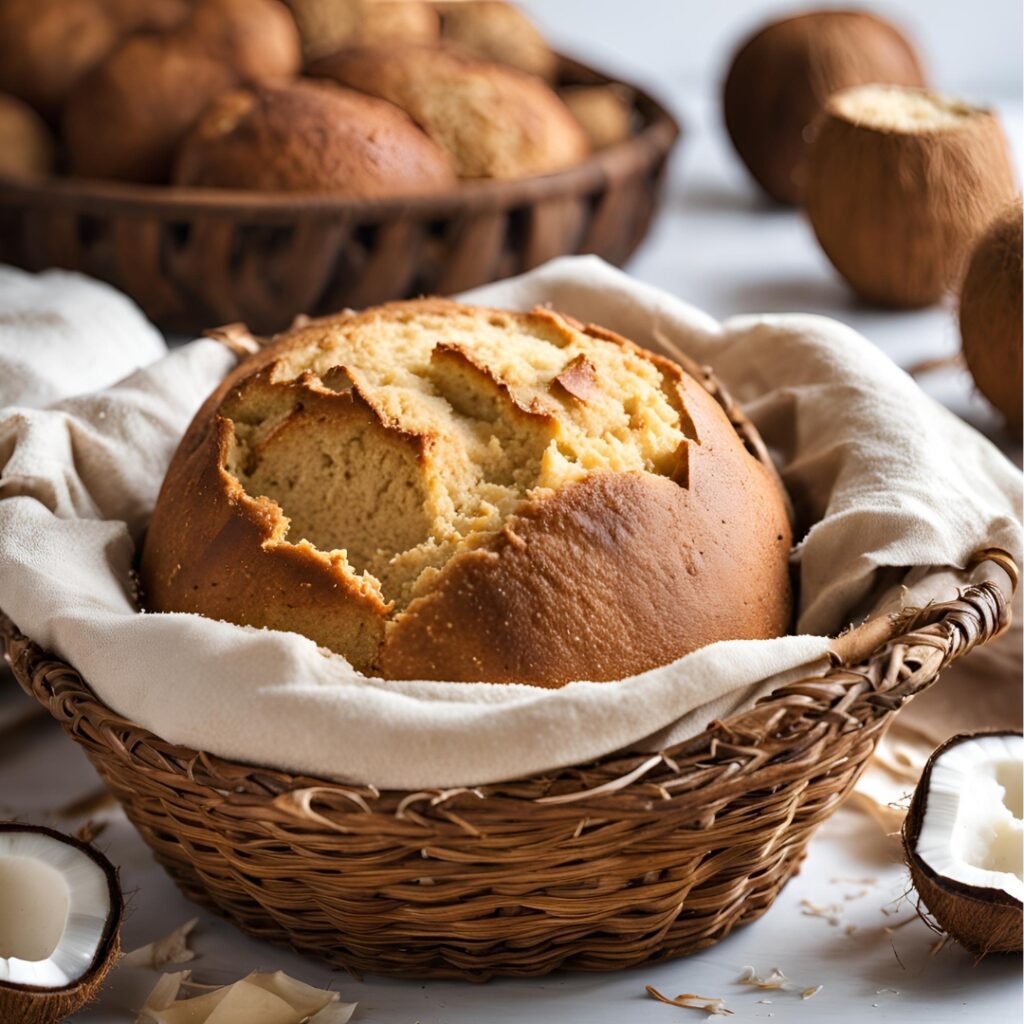
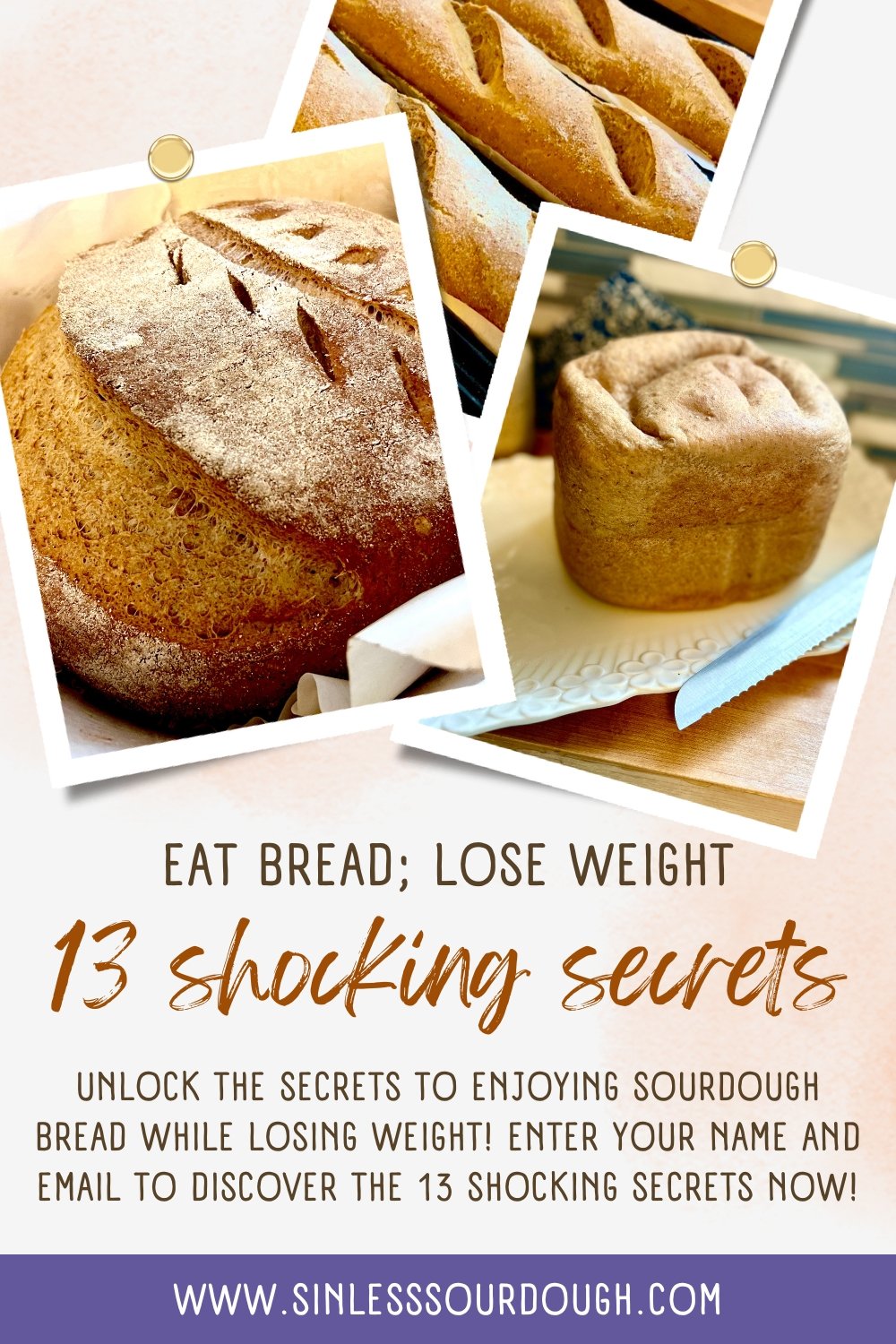
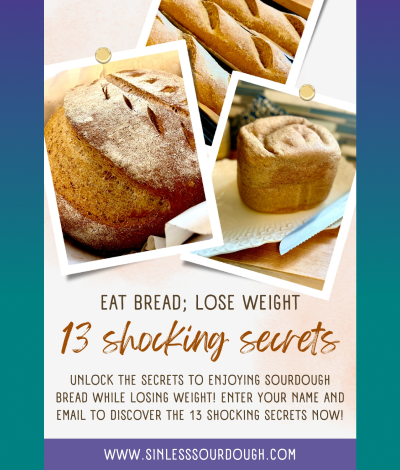
Responses